
‘Kingbilli’ is a 200 acre property of rolling hills and rocky river flats at Taggerty, in rural Victoria, Australia; and so far, it is home to four extraordinary Azawakh.
We, Georgina and Simon Covington, live here too; with our young son Daniel; a mildy-insane Bichon Frise with a Rambo-complex; a completely crazy ginger cat who’s convinced he’s the fifth Azawakh; and an eclectic collection of bemused llamas, naughty Shetland ponies and unmoved retired horses. Plus well over a hundred free-living but unusually nonchalant species of native Australian birds and animals.
Simon and I both grew up with dogs, of a diverse range of breeds. Memories shared with them brighten almost every corner of my mind, from the earliest recollections, throughout the tribulations of teenagerhood, to the greatest highs and lowest lows of early adulthood. Noble treasures, each of them, who gave me their all as playmates, protectors, confidants… and indeed, I swear one, my first Dobermann, even saved my life. But when, having helped all my dreams come true, he left me, in 2017, I could not fathom how to replace him.
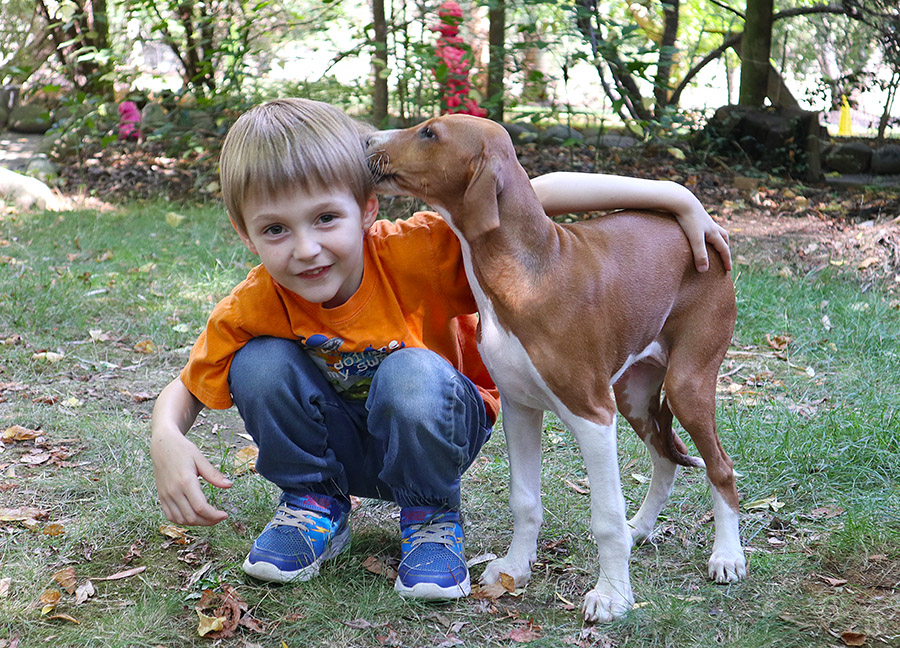
It was a dark year, 2017. Just months apart, Simon, too, lost his four-legged best friend – his happy go lucky Labrador, and we knew my last remaining Dobermann would soon follow his big bro. I desperately wished to find some way to fill the looming void. But how?
The search took almost three years. As a behavioural biologist, veterinary nurse, obedience instructor and certified master groomer, I’ve worked with nearly a hundred different breeds of dog… but no amount of cogitation, consultation or debate could bring me to a decision. Nothing felt right. That is, until I met my first Azawakh.
The phrase ‘love at first sight’ may be corny… but oh my gosh: the love, the humour, the loyalty…the beauty! Grantulla Ijouniane, aka ‘Kora’, joined our family in February 2020. I named her after a West African musical instrument as a wifely nod to my husband’s love of music, or in other words, a ‘thankyou honey for letting me get a new puppy.’ Of course, he melted at the first waggle, and Daniel, our then 6 year old son, was rapt.
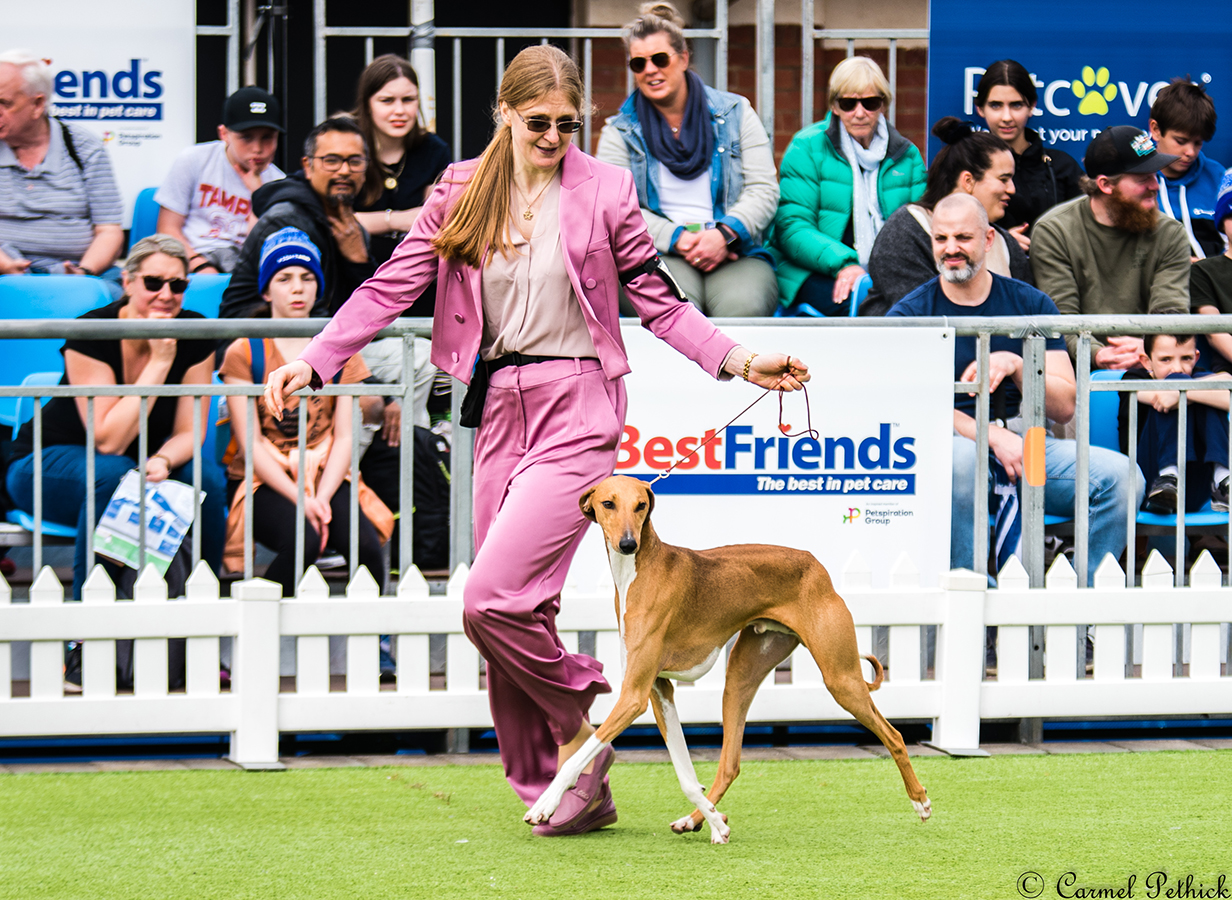
Indeed, no words could express the pure joy we all felt as we began sharing our lives with an Azawakh. It was not long before I was nagging both Australian breeders to see if either would consider a not-too-distant litter.
In May 2021, Grantulla Inerane made two. We named him ‘Calabash’ or just ‘Bash’, after the fruit gourd used to make the ‘Kora’. Between the showring, local obedience club and simply lapping up the love and laughter at home, we were all having a blast.
So it was inevitable, I suppose, that we jumped at the chance for Kora’s mother, Champion Grantulla Amzhad JC, to enjoy her retirement with us in September 2022. Aged 7, she slotted straight into the family as if she’d been here all along. (Incidentally, the ‘Amzhad’ is another West African instrument made from the Calabash fruit).
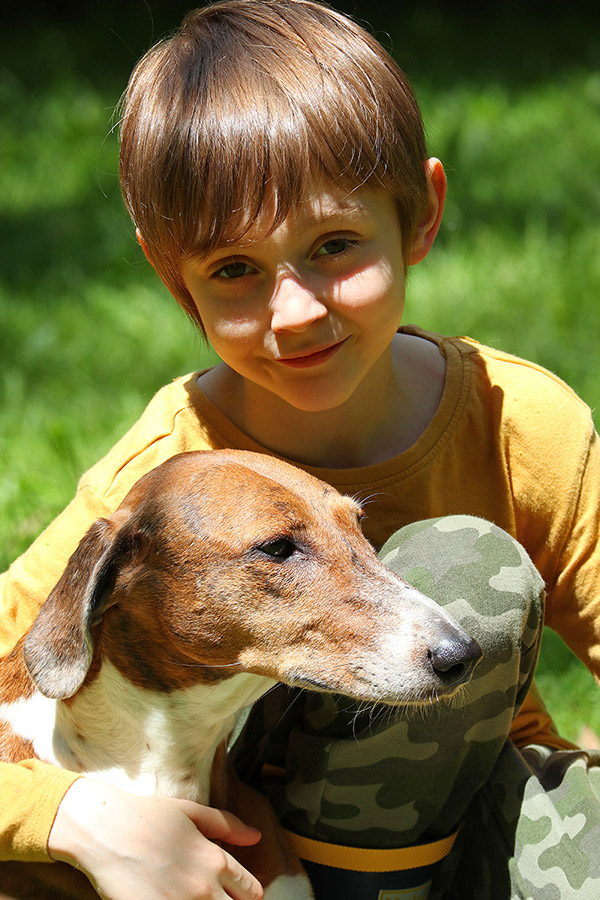
Next, in April of this year, Bash’s little litter-sister, Grantulla Tartit pocket-rocketed her way into our hearts and home with all the comedy of Wile E Coyote, and bucketloads of love. And I do realise, writing this, that four hounds in three years may sound a little excessive: but whilst I struggle and fail to resist another corny turn of phrase… chips have nothing on Azawakh.
So here we are… obsessed is the only word for it. And priveleged. Our four hounds live freely together as a pack, sprawled across the furniture or galloping around the paddocks. We have discovered bikejoring, and love it dearly, in between shows or obedience practice or merely shocking the neighbourhood by turning up at the playground, cafe or boat club with four unusual hounds in tow.
It’s funny, despite a deep love of dogs and a lifetime breeding various kinds of farm animals, we had never taken such a deep interest in the breeding of any particular breed of dogs before we fell in love with Azawakh. Their fragile hold in a world so changed from the ancient landscape and lifestyle which created them thousands of years ago… it evokes fond yet anxious memories of the Dingoes I loved as a zookeeper in my twenties.
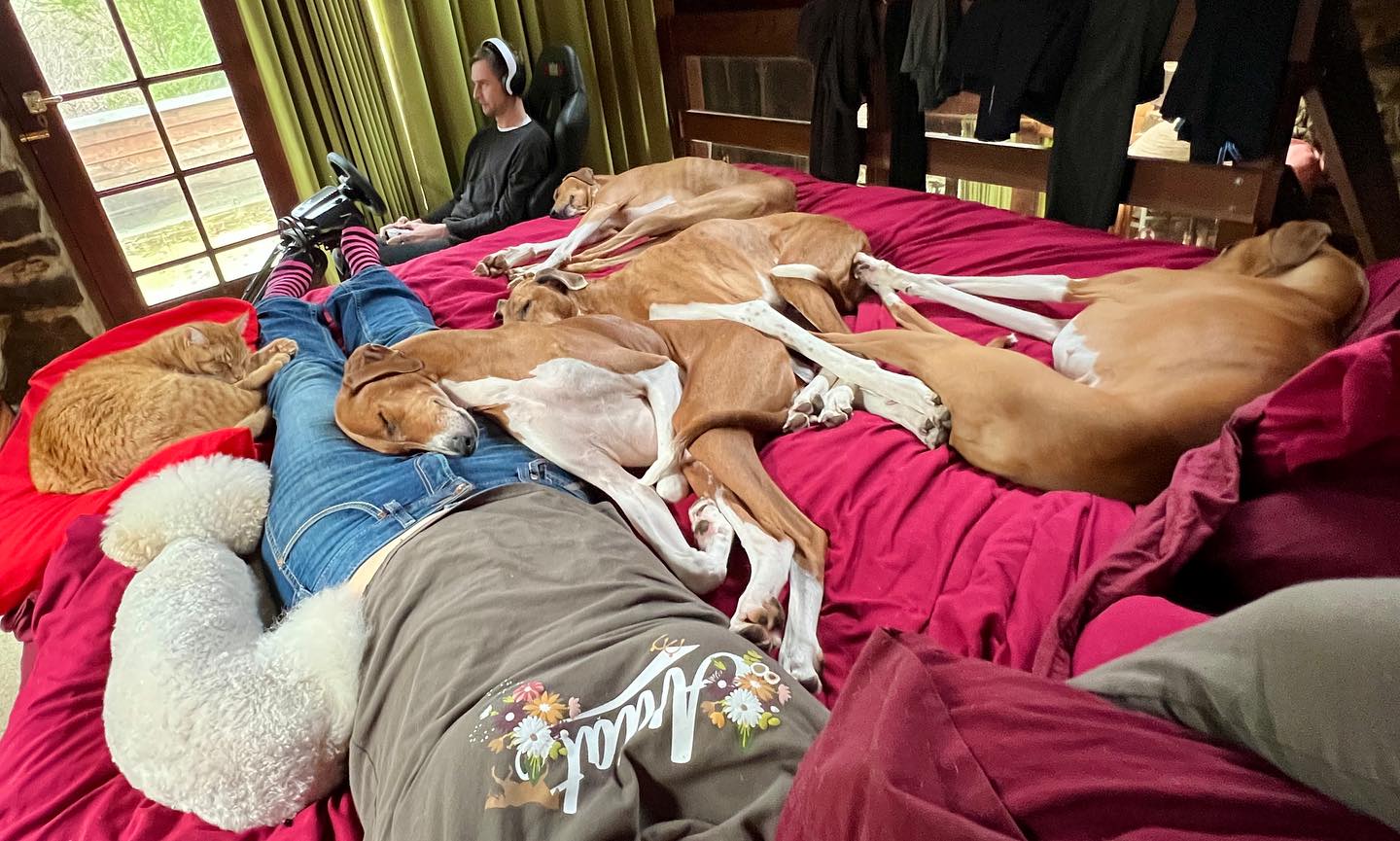
This is no ordinary breed of dog. This is a rare, African landrace, endangered by war in its homeland and squeezed from all sides in the Western world by modern expectations of dog park etiquette, showring foibles, Hollywood breed-fads and designer crosses. In a world where everything is ‘market driven’; where is the place for this brave yet shy, kind yet complex creature, who’s nature requires a family prepared adapt to its past, not mould it to suit our present? What is to stop it being lost: sculpted, diluted – peer-pressured if you will – until it is nothing but a caricature of its former, magnificent self?
Azawakh are in legitimate need of conservation, and the task of doing so authentically, in a genetically sustainable manner, in the context of the modern show/sport/pet dog world is not for the faint-at-the-heart.
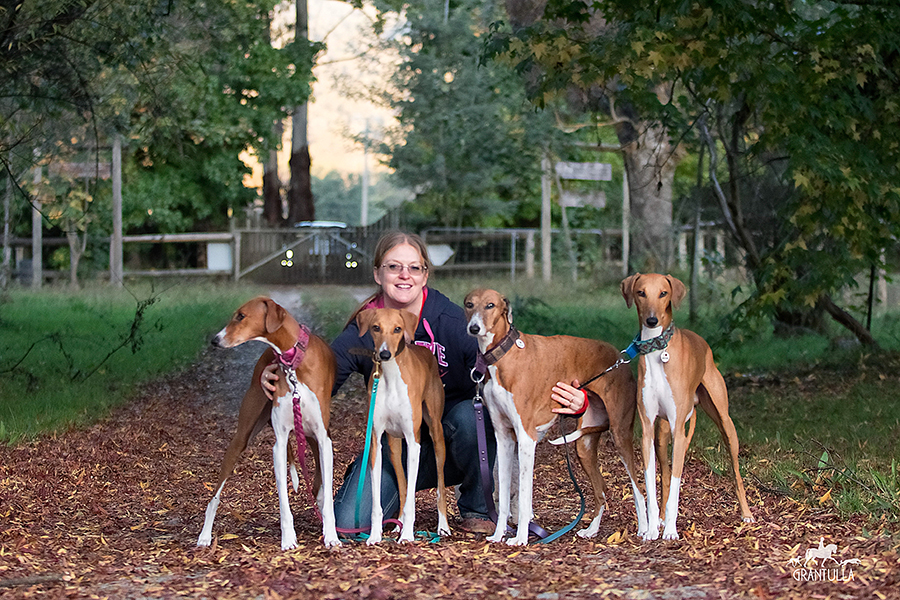
We sincerely hope there will continue to be enough breeders around the globe who are committed to preserving this breed in the original African form we have come to know and adore.
With a sound physique; loyal, steady temperaments and the inimitable mystique of the desert in their veins… they breed the Azawakh of their ancestors, prioritising health, longevity, fitness for function and above all, a low inbreeding coefficient, to ensure the future of these dogs is a very long future indeed.

